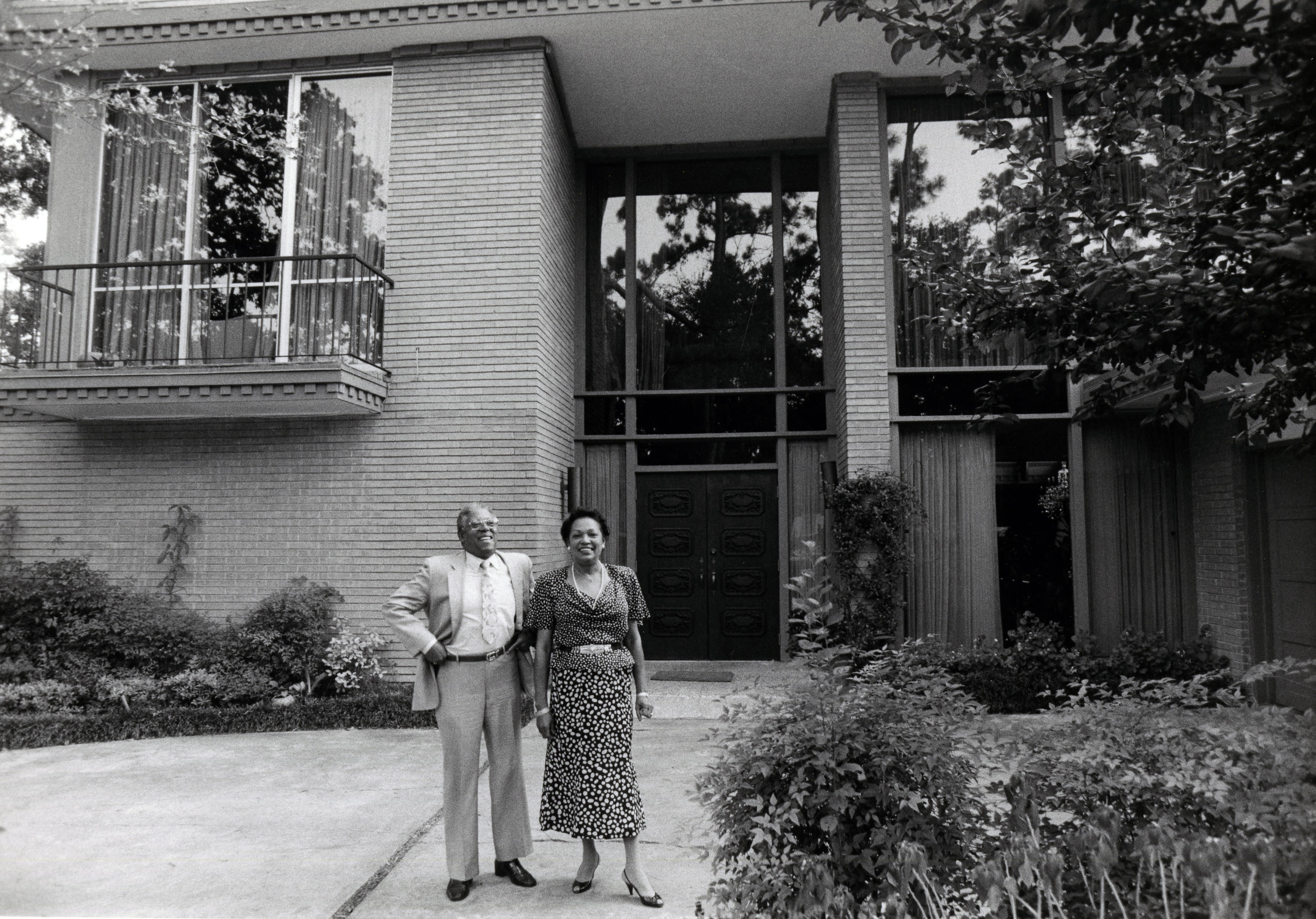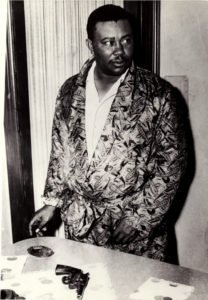
This Is Our Home, It Is Not for Sale (This Is Our Home) is the title of Jon Schwartz’s 1987 documentary film that chronicles Houston’s Riverside neighborhood. While it is the story of a specific neighborhood in Houston, the themes of segregation, integration, white flight and disparity of city services are common elements in the history of many large American cities. This Is Our Home, which boasts an impressive 3 hour and 20 minute run time, includes interviews with some of Houston’s most famous and influential residents. The University of Houston Library Special Collections is home to the This Is Our Home, It Is Not For Sale Film Collection, which includes Schwartz’s original production documents, photographs, and production films, including B-roll footage and early edits of the documentary.
The original production used a dual reel system of motion picture and a separate fullcoat magnetic soundtrack that requires syncing to achieve a digitized video product. These films were at particular risk of loss due to the use of fullcoat magnetic soundtrack in production, making it susceptible to extreme vinegar syndrome. The films, used in the editing process, also featured numerous splices and missing portions which were utilized in edits of the documentary. In 2017, The University of Houston Libraries was awarded a Texas Libraries and Archives Commission TexTreasures grant to digitize 112 filmed interviews, and make them available via our AudioVisual Repository. These raw interviews provide insights both into the former and current residents opinions of the neighborhood that had undergone a drastic transition, they are primary documents of individuals struggling to discuss the complexities of race relations and emotional attachments to “home.”
The Story of Riverside
In the 1920s, members of Houston’s wealthy Jewish community were blocked from home ownership in Houston’s elite River Oaks neighborhood by anti-Semitic deed restrictions. In response to these restrictions, the community helped to establish the affluent Riverside neighborhood, located to the west of University of Houston’s central campus. The neighborhood, inhabited by Jewish and non-Jewish residents, became the center of Jewish culture in Houston and was home to many influential Houston families. In 1952, Jack Caesar, a wealthy cattle rancher, moved to Riverside by instructing his white secretary to buy a home and transfer the deed over to Caesar, defying deed restrictions that blocked black individuals from purchasing homes in the area. His arrival on Wichita Street was first met with a buyout offer from neighbors who had pooled their money. Caesar refused the offer, and a dynamite bomb was detonated on the porch of the Caesar family’s home. Unharmed and undeterred, the family remained in Riverside. With landmark Supreme Court cases including District of Columbia v. John R. Thompson Co. Inc. (1953) and Brown v. Board of Education (1954) finding segregating policies unlawful, more affluent black families bought homes in the neighborhood.

John and Drucie Chase standing in front of their Riverside home, designed by John Chase. From the This Is Our Home, It Is Not For Sale Film Collection.
In response to the influx of black residents and spurred on by unscrupulous real estate agents instigating anxieties about falling home values, many white residents sold their homes and moved to other areas of the city. Residents who hoped to maintain the neighborhood as an integrated community began a yard sign campaign that proclaimed “This Is Our Home, It Is Not for Sale.” While this movement gained national attention, it was not enough to slow the departure of white homeowners. Riverside continued to be shaped by forces including the departure of area businesses, the growth of UH and TSU campuses, construction of Highway 288, and the decision to locate a county psychiatric hospital in the neighborhood. In the late 1980s, white homebuyers attracted by Riverside’s beautiful homes, central location, and reasonable prices, began moving back into the area.
Through interviews with former and current residents of Riverside, This Is Our Home examines how anti-Semitism, racism, real estate agent-driven blockbusting, profiteering, white flight, and urban development projects created and continue to shape what was once one of the Houston’s most desirable neighborhoods.
Now Online

Jack Caesar, photographed with personal firearm following the bombing of his home (This Is Our Home, It Is Not For Sale Film Collection).
It is our hope that these materials will serve as a valuable resource, in complement to Schwartz’s documentary, and aid in scholarship around Houston. These primary source materials that trace the waves of segregation and desegregation dynamics in a large southern city and reveal the tensions related to population growth and demographic shifts. Not only do they document a segment of Houston history, but they also provide a profile of urban development with implications beyond the city and the region. Likewise, architectural historians, urban planners, historical geographers, and public administrators figure among the populations who may benefit from access to the complete, raw interviews.
All digitized raw interviews are available through the UHL Audiovisual Repository, and we have curated an online exhibition featuring an interactive map of the neighborhood highlighting interviews with Riverside’s residents. The full documentary can be viewed in the Special Collections Reading Room or purchased at http://thisisourhomeitisnotforsale.com/.
